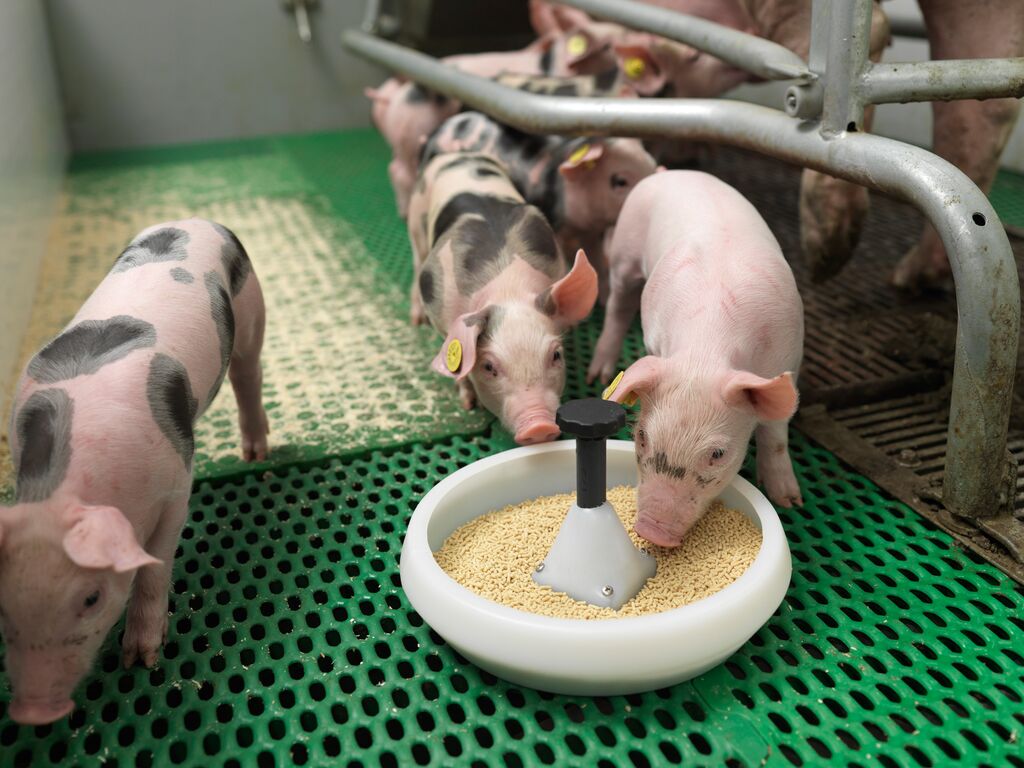
Managing piglets after weaning
A critical aspect of pig farming that significantly impacts their health and growth. For those unfamiliar with farming, "weaning" refers to the process of transitioning piglets from their mother’s milk to solid food. This period can be stressful for the piglets, so careful management is essential to ensure their well-being and development.
Preparation: Setting the Stage for Success
Before the piglets are moved into the nursery (the area where they will live after being separated from their mother), it’s crucial to make sure everything is just right. The pens must be thoroughly cleaned, disinfected, and completely dry. This helps prevent any potential health issues caused by lingering bacteria or dirt.
Additionally, all the equipment, such as water tubes and drinking nipples (which are like small fountains for piglets), should be checked to ensure they are working properly. The room where the piglets will stay should be warm—about 26°C—because piglets are sensitive to temperature changes. 
The Day of Weaning: A Smooth Transition
On the day the piglets are weaned, It is advised to do it early in the morning to give them the entire day to settle into their new environment. It’s important not to mix piglets from different litters’ too much, as they might fight and stress each other out. Instead, we try to keep them with their siblings and sort them by size or gender before putting them into their new pen.
One of the most important things is to make sure the piglets have easy access to food as soon as they arrive. Their feeders (where the food is placed) should be filled and ready, and we also keep the lights on for the first 48 hours to make them feel secure and help them find their food and water easily.
Maintaining Cleanliness: Biosecurity Measures
In farming, keeping everything clean is key to preventing diseases. After weaning, we pay extra attention to cleanliness in the nursery. Pens and feeders are regularly cleaned, and the corridors are kept free of dirt. This keeps the piglets healthy but also helps in managing the overall environment of the nursery.
Feeding and Watering: Essential Practices
Proper feeding and watering are vital in the days following weaning. The ideal situation would be for each piglet to have its own feeding space to ensure they all get enough food. We make sure the feeders are filled with the right type of feed and keep track of how much the piglets are eating.
Water is just as important as food. Each piglet should have easy access to clean water, with the drinking nipples adjusted to the right height for their size. We also monitor the water flow to make sure it’s just right—not too fast, not too slow.

Monitoring Health: Keeping an Eye Out
After weaning, we closely monitor the piglets for any signs of health issues. Common problems include diarrhea, respiratory issues, and other infections. By catching these early, we can take steps to treat them before they become serious. We also observe the piglets' behavior and appetite—if something seems off, it’s a signal to check their health and environment.
Managing piglets after weaning may seem complex, but it’s all about ensuring that these young animals get a good start in life. By paying attention to their environment, food, water, and health, we can help them grow strong and healthy. For those new to pig farming, understanding these basics is a good first step toward raising healthy pigs.
